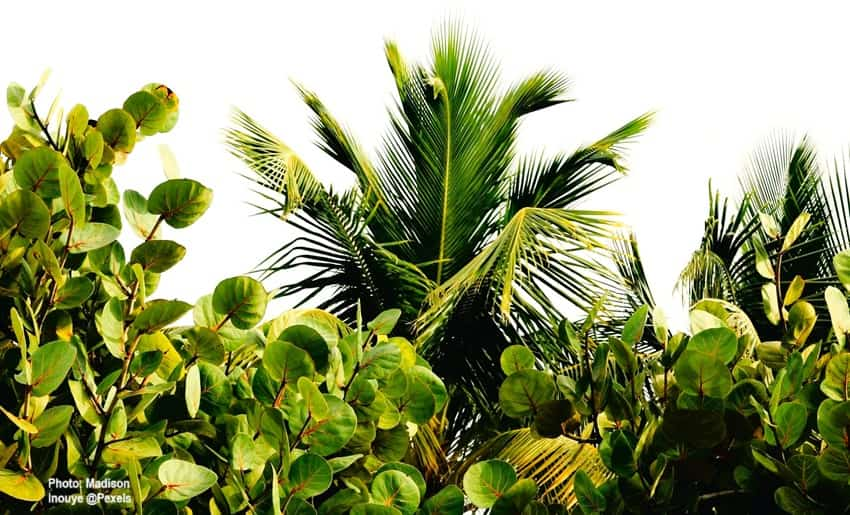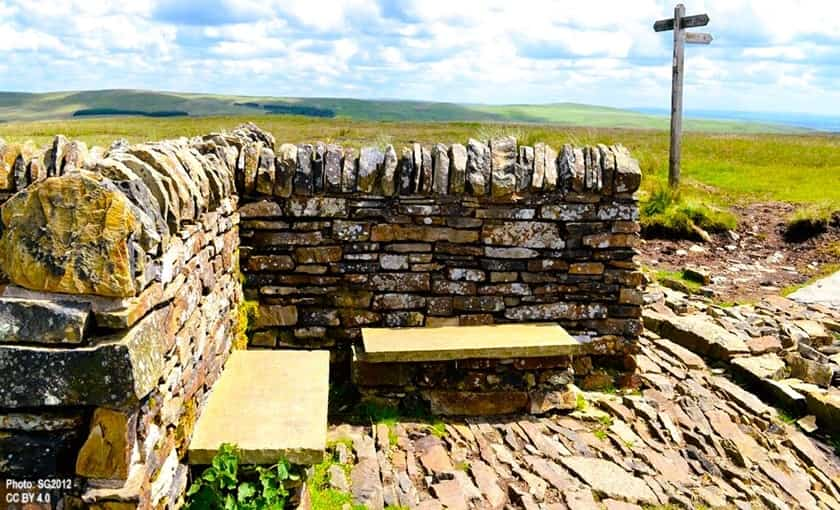- Home
- Caring For Palms
- Outdoor Palm Care
- Palm Winter Prep
Palm Tree Care in Winter
Palm tree care in winter helps ensure that your tropical palms continue prospering.
Just as people who live in colder climates prepare their cars & trucks with antifreeze and snow tires for winter conditions, palm tree growers should prepare their palms for unexpected freezing weather.
Maybe last year your palm endured harsh, frosty weather. So now you're looking ahead, as your treasured palm tree again faces wintertime. The fear of repeating any past missteps captures your thinking.
Let's rid you of concerns. You'll find the easy steps we show you can protect palms in freezing cold.
At Mission: Palm Trees
We help palm lovers simplify their searches and ease their concerns. Our articles are meant to inform, while having fun, easily Finding What You Want or Need. We eliminate unnecessary shoptalk & tiring research. We Discover For You!
Table of Contents
Prevention is the Best Solution for Winter Care
For palm trees, you've now found that winter is a worrisome season.
Palms, as naturally tropical plants, are sensitive to cold weather. As an Outdoor Palm Tree, you can see to it that it gets through the winter months just fine.

Your first step is reviewing the specific needs of your Palm Tree Species to help protect it against the cold.
To begin, Identify Your Palm Species. Each palm has particular needs and distinct levels of cold tolerance. You want to know you're Giving Your Palm Species Good Care!
Knowing specifics becomes your best preventative measure.
- Does it have any cold tolerance at all? Consider light frost, slight freeze, or severe freeze conditions.
- Know if it can recover from freezing injury.
- Discover the lowest temps it tolerates before damage hits.
Something to remember: not only is temperature distress affecting palms in winter. Other specifics are involved:
- Duration of exposure to frost.
- Frequency of cold fronts bringing whipping, drying winds.
- Soil temperature around the roots.
 DO YOU GET ALL FOUR SEASONS? WITH SOME FROSTY DAYS IN WINTER?
DO YOU GET ALL FOUR SEASONS? WITH SOME FROSTY DAYS IN WINTER?Not much research has been done about temperature-related effects on all palm trees. But one study involves some species. To discover temps that demonstrated impairment and devastation. A few common palms' results are:
- Livistona chinensis (Chinese Fan Palm) suffered first leaf damage at 15.8oF/-9oC & entire leaf death at 13.1oF/-10.5oC
- Phoenix roebelenii (Pygmy Date Palm) suffered first leaf damage at 19.4oF/-7oC & entire leaf death at 17.6oF/-8oC
- Trachycarpus fortunei (Windmill Palm) suffered first leaf damage at 12.2oF/-11oC & entire leaf death at 6.8oF/-14oC

See the Latest
-
Beach Sunset With Palm Tree in View - Find Your Place for Bliss
Find Your beach sunset with palm tree serenity brings you that tropical calm. Evoking relaxation in just the right place for a vacation. Come on in!
Palm Plant Frost Protection - Actions to Take
How do you keep palm trees alive in winter? We've got several protective actions you can take.
Mulching for Cold Protection
FTC Disclosure: If clicking on a red link or viewing ads on this page, we may earn a small royalty. There's no added cost to you. Thanks much for any looks/ orders! Details>
Apply a thick layer of mulch around the base of the palm to insulate the roots: choose from Organic Mulch, wood chips, or straw. But don't let the mulch touch the trunk, which could also cause damage.
Mulch helps to insulate roots and retain warmth by keeping the soil warmer in winter cold.
Assorted Frost Covers Help Plants Stay Safe in Winter
What else can you do with palms in the winter?
Use Frost Cloth, or Burlap, or Plastic Sheeting to cover the palm. A protective barrier helps secure the palm from cold winds and frost. To keep it safe.
Windbreaks Provide Palm Tree Care in Winter
Consider installing windbreaks to shield the palm: use Natural Fences, Artificial Barriers, or strategically planted hardy shrubs.
Harsh winds that arrive with oncoming cold fronts are very drying. Which worsens cold damage susceptibility.
 Bushy Shrubs Planted in Front of Palms as a Windbreak
Bushy Shrubs Planted in Front of Palms as a WindbreakBeyond Nursery Tricks:
Safe Palm Protection Strategies for Homeowners
Commercial plant nurseries sometimes use techniques for winter care and protection. You may have heard of some. We're letting you in on these for full disclosure of methods.
 Do Commercial Nurseries Have Good Tricks?
Do Commercial Nurseries Have Good Tricks?Hidden Risks of Nursery Techniques:
By Using This Cold-Weather Palm Care
Some advocate subjecting palms to water stress. By cutting back on normal watering schedules.
Palm aficionados living in chilly wintertime climates aim for reliable ways for palm tree care in winter. They may note this one study, where Windmill Palms showed a slight increase in cold tolerance after experiencing water stress.
But little more research involving this practice has been done. Knowing that, water stress isn't a reliable method for all palm species in all conditions.
With no guaranteed results and potential harm, instead use methods with proven effectiveness, like we've shown you here. The reasonable choice for homeowners.
Hidden Risks of Nursery Practices:
Protecting Your Palms Wisely
Some use an icing technique that seems to work, when done properly.
It takes planning. Overhead watering must be done before the freeze sets in. Once that's happened, this irrigation must be continued.
It’s unreasonable for homeowners to manage this demanding process. Who need safe, straightforward methods to protect their palm trees from freezes.
Plus, this practice risks structural damage, the ice weight can break off fronds. If not freeze injury. Rather than risk ice damage - adopt our simpler, safer methods for protecting your palms.
Will Chemical Methods Work?
Some nurseries have tried using Antitranspirant Chemicals.
That cause microscopic leaf openings to close. That prevents moisture exhalation, and limits gas exchange. The absorbing carbon dioxide and giving off oxygen. Not good for palm health, we'd say.
Why Homegrown Palm Care Beats Nursery Methods
Studies for all these methods are insufficient and inadequate.
We absolutely don't recommend any of these commercial practices for homes with palms.
Cold Damage Symptoms
Suspicion of cold or freezing damage can be noted and confirmed by signs or symptoms.
Keep in mind that immature palms, up to about two years old, are the most endangered by cold. No matter the species. The older the palm, the more resistance it will have.
Watch the fronds after temperatures begin getting near freezing.
- Some palm species tolerate temperatures that go below freezing for a short time.
- Other palms begin showing cold damage at much higher temperatures. As high as 50oF/10oC!
You might see frost damage signs on all but the newest Palm Tree Parts. Like leaf blades of the newest fronds.
The most cold resistance areas are the heart (thank goodness!) and leaf stems (petioles). The most sensitive areas are spear leaf bases, roots (especially tips) & flowers.
What flowers??
All those are normally gone by the time cold weather sets in. It's just that in studies, different parts are subjected to below freezing temps to document the result.
If a palm endures lengthy freezing, the trunk can be damaged. Probably leading to death.
- Several months later, you'll note soft, sunken, reddish areas.
- This results from fungi or bacteria entering through a weakened area.
Some species seem to die after freezing weather. But if the palm's heart wasn't injured, the palm tree can regrow. Therefore, give dead-looking palms some patience.
It's essential to respond within the first couple of weeks.
- If a new spear is damaged, don't allow moisture to accumulate at its base. That invites fungal problems.
- Should you cut off browned leaves? While cold weather is still possible, let dead fronds remain as insulation. Definitely don't Prune Palm Leaves, or parts still showing any green.
- See all needed actions to Care For Freeze-Damaged Palms.
Benefits of Using Palm Tree Care in Winter
Taking the steps we've suggested will give you and your palm several benefits:
Healthier Palm Growth
Proper palm tree care in winter care carries your palm into the spring for continued top form. Its foliage will continue lush & vibrant. Being ready for new growth that comes along this coming year.
Increased Confidence
Now that you've gained this knowledge about palm care for winter, your self-assurance gets a boost. You'll feel unperturbed with facing future winters.
Cost Savings
When preventing winter damage, the need for expensive treatments or replacements is about entirely gone. You'll save money in the long run.
Enhanced Curb Appeal
A luxuriant palm lifts the entire aesthetic of your property. You'll continue admiring its tropical attractiveness, with the potential for increased home value.
Takeaways for Palm Tree Care in Winter
When reflecting on the previous winter’s challenges, it sparked this realization: understanding the specific needs of your palm could prevent future damage.
This "Ah-Ha" moment led you to equipping yourself with the right information. Now you can transform winter from a season of stress to one of successful preservation. Embrace the winter with confidence, knowing that your tropicals are well-protected.
By understanding and implementing the right palm tree care in winter, you can remake cold seasons from a time of awful decimation into one of healthy survival. Your palms will not only survive those frosty months, but emerge strengthened.








